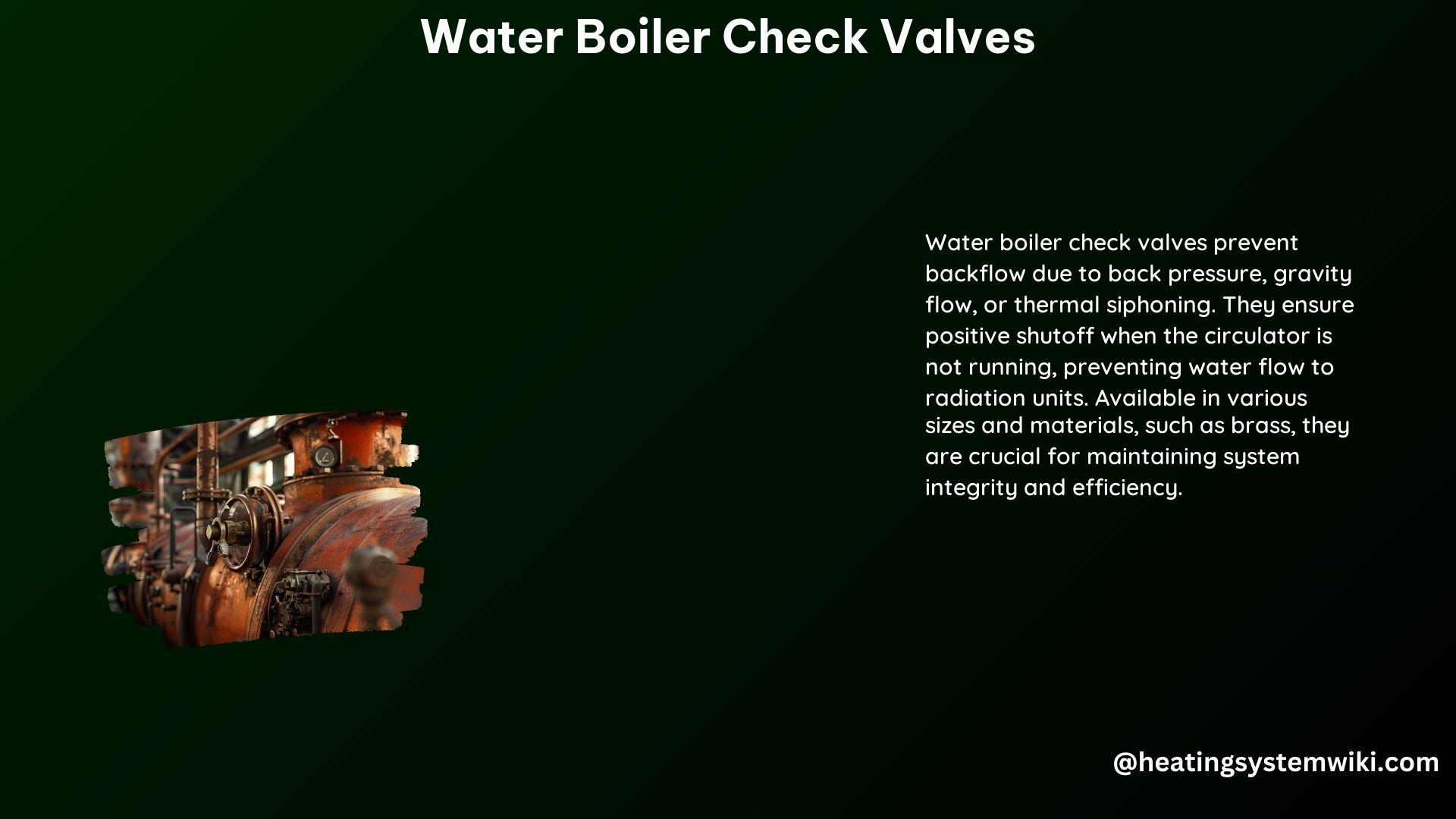Water boiler check valves are essential components in heating systems, ensuring proper water circulation and preventing backflow, which can lead to damage or inefficiency. This comprehensive guide delves into the technical specifications, installation, and maintenance of these crucial valves, providing DIY enthusiasts with the knowledge they need to ensure their heating systems operate at peak performance.
Function and Purpose
Water boiler check valves are designed to prevent hot or chilled water from circulating in the heating or cooling system when the circulator is not running. This is crucial as it ensures that water does not flow back into the boiler or radiator units, which can cause damage or inefficiency. By maintaining the proper direction of water flow, these valves play a vital role in the overall efficiency and longevity of the heating system.
Types of Check Valves

Swing Check Valves
Swing check valves utilize a hinged disc that swings open to allow flow in one direction and closes to prevent backflow. These valves are known for their simplicity, reliability, and ability to handle a wide range of flow rates and pressures. They are commonly used in residential and light commercial heating systems.
Lift Check Valves
Lift check valves employ a spring-loaded disc that lifts to allow flow and returns to its seat to prevent backflow. These valves are often preferred in applications with higher flow rates or where a more positive seal is required to prevent backflow. They are commonly used in larger commercial and industrial heating systems.
Technical Specifications
Materials
Water boiler check valves are typically constructed from corrosion-resistant materials, such as brass, stainless steel, or bronze, to withstand the high temperatures and pressures encountered in heating systems. These materials ensure the valves’ longevity and reliable performance.
Sizes
Check valves come in a variety of sizes to accommodate different pipe diameters. Common sizes include 1/2″, 1 1/4″, and 1 1/2″ to fit the most common pipe sizes used in residential and light commercial heating systems.
Pressure Ratings
Water boiler check valves are designed to handle specific pressure ranges, with ratings such as 300# (300 psi) for high-pressure applications. It is essential to select a valve with the appropriate pressure rating for your system to ensure safe and reliable operation.
Threaded or Flanged
Check valves can be either threaded or flanged for easy installation and connection to pipes. Threaded valves are typically easier to install in existing systems, while flanged valves are often preferred in new construction or for larger pipe sizes.
Installation and Maintenance
Installation
When installing a water boiler check valve, it is crucial to ensure that the valve is positioned in the correct direction of flow. The arrow on the valve should point in the direction of the desired water flow to ensure proper operation and prevent backflow.
Maintenance
Regular inspection and cleaning of water boiler check valves are essential to maintain their proper function and prevent issues such as clogging or corrosion. Manufacturers typically recommend annual or bi-annual inspections, depending on the system’s usage and environmental conditions.
DIY Considerations
When installing a water boiler check valve as a DIY project, there are several key factors to consider:
-
Valve Size and Type: Ensure that you select the correct valve size and type (swing or lift) for your specific application. Choosing the wrong valve can lead to improper fit, flow issues, or even system damage.
-
Manufacturer’s Instructions: Carefully follow the manufacturer’s installation instructions to avoid any mistakes that could compromise the valve’s performance or the overall system’s integrity.
-
Regular Maintenance: Establish a routine maintenance schedule to regularly inspect and clean the check valve. This will help ensure its continued reliable operation and prevent potential problems down the line.
By adhering to these DIY considerations, homeowners and DIY enthusiasts can successfully install and maintain water boiler check valves, ensuring the efficient and safe operation of their heating systems.
References
- eBIRDSALL.com. (n.d.). Check Valves – Heating. Retrieved from https://ebirdsall.com/default/heating/valves/check-valves.html
- Watts. (n.d.). Flow Check Valves. Retrieved from https://www.watts.com/products/hvac-hot-water-solutions/heating-valves-accessories/flow-check-valves
- PexUniverse. (n.d.). Inline Check Valves. Retrieved from https://www.pexuniverse.com/check-valves
